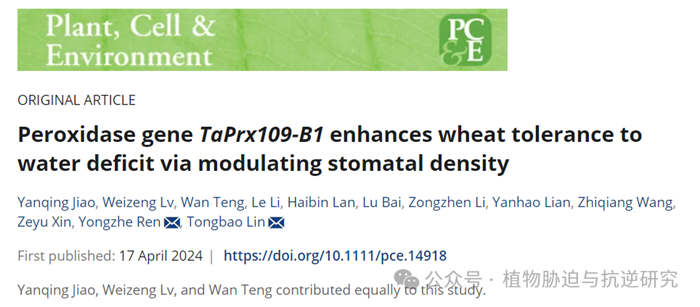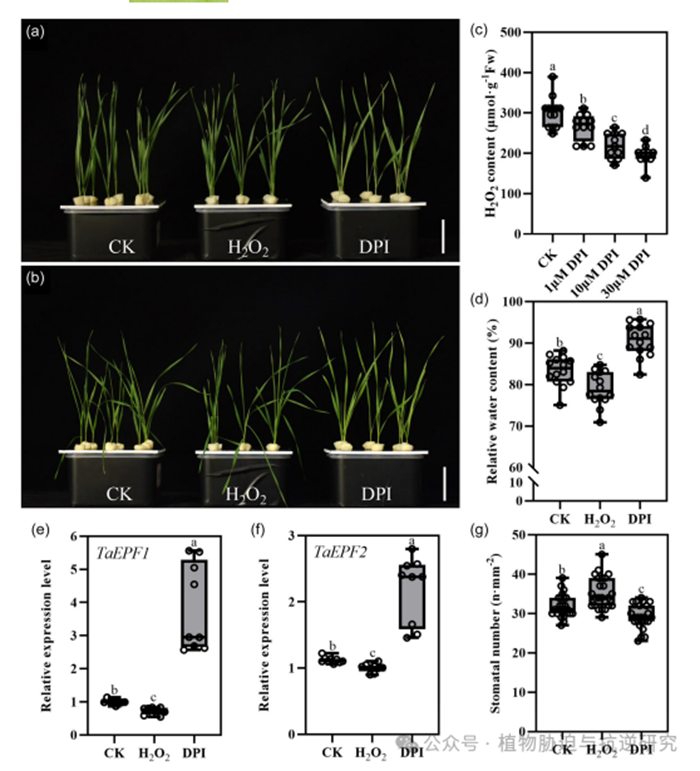
在本研究中,作者鉴定了属于III类过氧化物酶基因家族的小麦过氧化物酶基因(TaPrx109-B1),并揭示了其在耐缺水性中的功能。作者证明,TaPrx109-B1的过表达降低了叶片H2O2水平和气孔密度,增加了叶片相对含水量、水分利用效率和对缺水的耐受性。
TaEPF1和TaEPF2这两种气孔发育的关键负调控因子在TaPrx109-B1过表达系中的表达显著上调。此外,外源H2O2下调了TaEPF1和TaEPF2的表达并增加了气孔密度,而外源施用二苯碘鎓氯化物(一种抑制H2O2合成的强效NADPH氧化酶抑制剂),上调了TaEPF1和TaEPF2的表达,降低了气孔密度并增强了小麦对缺水的耐受性。
这些发现表明,TaPrx109-B1通过调节H2O2水平来影响叶片气孔密度,从而影响TaEPF1和TaEPF2的表达。田间试验结果表明,过表达TaPrx109-B1增加了每穗粒数,减少了缺水造成的产量损失。因此,TaPrx109-B1在培育耐缺水性提高的小麦品种方面具有很大的潜力。

Increasing the tolerance of crops to water deficit is crucial for the improvement of crop production in water-restricted regions. Here, a wheat peroxidase gene (TaPrx109-B1) belonging to the class III peroxidase gene family was identified and its function in water deficit tolerance was revealed. We demonstrated that overexpression of TaPrx109-B1 reduced leaf H2O2 level and stomatal density, increased leaf relative water content, water use efficiency, and tolerance to water deficit. The expression of TaEPF1 and TaEPF2, two key negative regulators of stomatal development, were significantly upregulated in TaPrx109-B1 overexpression lines. Furthermore, exogenous H2O2 downregulated the expression of TaEPF1 and TaEPF2 and increased stomatal density, while exogenous application of diphenyleneiodonium chloride, a potent NADPH oxidase inhibitor that repressed the synthesis of H2O2, upregulated the expression of TaEPF1 and TaEPF2, decreased stomatal density, and enhanced wheat tolerance to water deficit. These findings suggest that TaPrx109-B1 influences leaf stomatal density by modulation of H2O2 level, and consequently affecting the expression of TaEPF1 and TaEPF2. The results of the field trial showed that overexpressing TaPrx109-B1 increased grain number per spike, which reduced the yield loss caused by water deficiency. Therefore, TaPrx109-B1 has great potential in breeding wheat varieties with improved water deficit tolerance.


